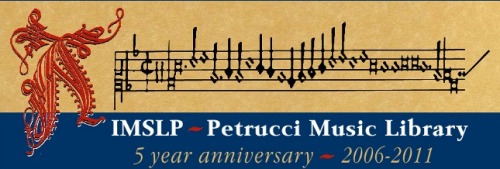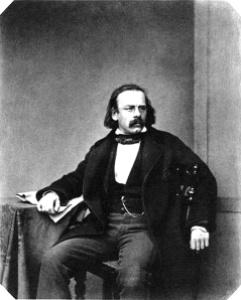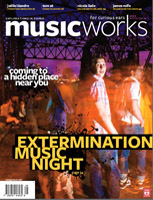The series Schola Cantorum Basiliensis: Scripta was inaugurated by Schwabe Verlag in 2009 with Die frühen Werke Johann Sebastian Bachs: Stil, Chronologie, Satztechnik by Jean-Claude Zehnder. The book follows the young composer’s development from 1699 to 1708, showing how even in his teens Bach’s compositions evinced an innovative, experimental mind at work.
Tag Archives: Composition
Iconoclastic romanticism
Although the pedagogue and author Wilhelm Heinrich von Riehl (1823–97) was not formally trained in music, he wrote extensively about the social significance of music making, and he argued for an approach that treated music history as cultural history. He criticized music histories centered on great composers, and advocated a more inclusive cultural approach that appreciated the unsung heroes and everyday life of the past.
Riehl was even more critical of his own time, lamenting the costs of transforming Germany into a modern industrial society; while he called for a more encompassing definition of Germany’s musical heritage, he rejected all of the art music of the day, and particularly railed against the works of Wagner. Riehl, therefore, is an ambiguous figure: He championed the idea of music as culture, but he explicitly rejected a future for music as art.
This according to Sanna Pederson’s “An early crusader for music as culture: Wilhelm Heinrich Riehl”, an essay included in our recently published Music’s intellectual history.
Comments Off on Iconoclastic romanticism
Filed under Ethnomusicology, Literature, Musicologists, Romantic era
Alphabetical impressionism
Bach’s use of a musical motive based on his name, B–A–C–H, is well known, and several other composers have used it in tributes to the Baroque master. As connoisseurs of French chamber music also know, Ravel made similar use of the technique of deriving musical material from a composer’s name in his Berceuse sur le nom de Gabriel Faure and Menuet sur le nom d’Haydn.
Far less known is the further use of this technique by both Debussy and Ravel in more enigmatically titled pieces. For example, several of their works bearing the words hommage or tombeau include musical material derived from the honoree’s name. Such formerly puzzling titles, which have led the curious on wild-goose chases in their attempts to understand what on earth the music had to do with the named composer, may now be understood as sly references to uses of this technique.
This according to “Widmungsstücke mit Buchstaben-Motto bei Debussy und Ravel” by Paul Mies, an essay included in Festschrift für Erich Schenk (Studien zur Musikwissenschaft: Beihefte der Denkmäler der Tonkunst in Österreich, vol. 25 [1962], pp. 363–368); this journal issue dedicated to the Austrian musicologist Erich Schenk (1902–74) on the occasion of his 60th birthday is covered in our recently published Liber Amicorum: Festschriften for music scholars and nonmusicians, 1840–1966.
Below, Ravel’s Le tombeau de Couperin, one of the works discussed in the article.
Comments Off on Alphabetical impressionism
Filed under Curiosities, Impressionism, Source studies
Musique contemporaine / Contemporary music
Founded in 2007 by a consortium of French and international institutions and ensembles, Musique contemporaine/Contemporary music is a bilingual search engine for contemporary art music resources held at French institutions. Users can listen to excerpts of unpublished sound archives of conferences and concerts and read the program notes for these events. A glossary (in French) defines the main concepts involved in contemporary music, and an interactive structural map provides links to glossary entries, composers’ biographies, work excerpts, and so on. Also included are an interactive tag cloud of the composers who are most referenced, a composers’ timeline, and an interactive map showing the main French contemporary music organizations and providing their addresses. Simple and advanced searching tools are available.
Comments Off on Musique contemporaine / Contemporary music
Filed under 20th- and 21st-century music, Resources
Mangled Mozart
Mozart’s Entführung aus dem Serail was first performed in London at The Royal Opera House, Covent Garden on 24 November 1827. Stephanie’s libretto was translated into English and quite freely adapted, and one C. Kramer made numerous and inexplicable changes to the score, editing Mozart’s music, substituting his own numbers for some of the original ones, and adding entirely new numbers. None the wiser, audiences and critics received the mangled work with great enthusiasm.
This according to “The first performance of Mozart’s Entführung in London” by Alfred Einstein (1880–1952) in Essays on music (New York: W.W. Norton, 1956), a collection of his writings issued as a memorial volume; the book is covered in our recently published Liber Amicorum: Festschriften for music scholars and nonmusicians, 1840–1966.
Above, a nineteenth-century engraving depicting a production of the opera in London—perhaps the one that Einstein described. Below, Twyla Tharp and Milos Forman imagine the opera’s premiere in Amadeus.
Comments Off on Mangled Mozart
Filed under Classic era, Curiosities, Dramatic arts, Opera, Performance practice, Reception, Source studies
Petrucci Music Library

Founded in 2006, the International Music Score Library Project (IMSLP) hosts the Petrucci Music Library, a free wiki-based source for public-domain scores.
 The library, which is named for the innovative music printer Ottaviano Petrucci (1466–1539), mainly comprises scans of music editions whose copyright has expired; it also welcomes scores by contemporary composers who are willing to license their works without charge.
The library, which is named for the innovative music printer Ottaviano Petrucci (1466–1539), mainly comprises scans of music editions whose copyright has expired; it also welcomes scores by contemporary composers who are willing to license their works without charge.
Comments Off on Petrucci Music Library
Filed under Resources
Musicworks
Thanks to funding from the Canada Council for the Arts, the Ontario Arts Council, the Canada Magazine Fund, the SOCAN Foundation Publications Assistance Program, and the Canada Periodical Fund, Musicworks has been issuing articles, reviews, and scores focusing on Canadian music since 1978; since 1983, issues have included sound recordings as well. While Canadian composers and performers are most often featured, the magazine also covers Canadian traditional music in both native and non-native cultures.
Recently Musicworks sent us a full run of their back issues; now we are confident that all of their articles are fully covered by RILM.
Comments Off on Musicworks
Filed under 20th- and 21st-century music, Music magazines, RILM news
Beiträge zur Kulturgeschichte der Musik
The German publisher Allitera Verlag launched the series Beiträge zur Kulturgeschichte der Musik in 2009 with Deutsche Frauen, deutscher Sang: Musik in der deutschen Kulturnation, edited by Rebecca Grotjahn. The collection focuses on European musical topics in the nineteenth and early twentieth centuries, with essays that culturally contextualize the works of major composers along with those of lesser-known figures such as Albert Lortzing and Ingeborg Bronsart von Schellendorf.
Comments Off on Beiträge zur Kulturgeschichte der Musik
Filed under New series, Romantic era











